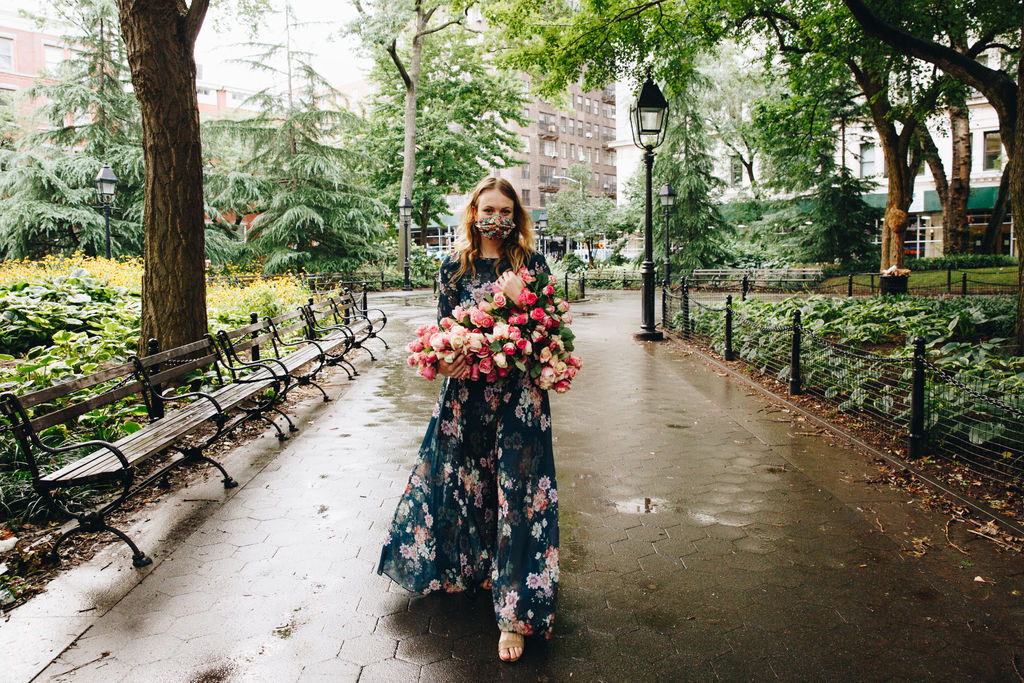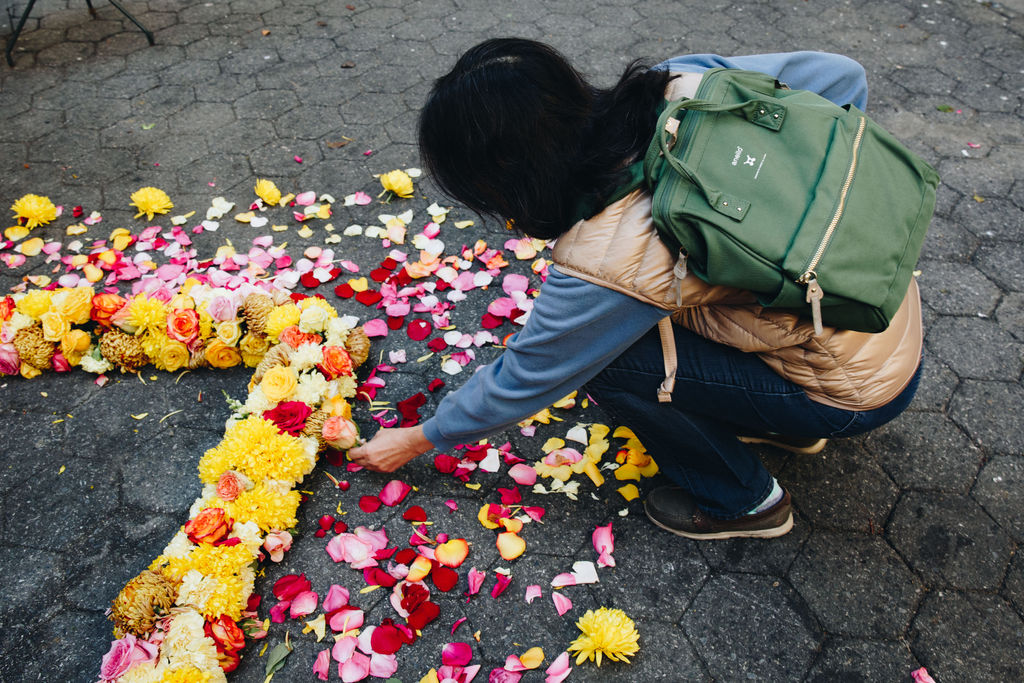In May of 2020, as the world was in the throes of the pandemic, I tried something new. I left the house early in the morning to buy hundreds of flower stems which I created into a garland. I then laid this floral heart in honor of those who have died from COVID-19 and as an act of support and love for all the people suffering. This one heart became many and eventually The Floral Heart Project was born.

The Floral Heart Project is a public art piece, generously supported by 1800Flowers.com, which is a living memorial dedicated to those lost to and suffering from COVID-19. I started it because I was alarmed by the lack of visual reminders of those who had died during the pandemic. Unlike September 11th or the mass casualty incidents of school shootings, we have not seen walls of flowers and photos of family members placed on sidewalks. As people died, they slipped out of sight and their family members were left alone and isolated.
Each Heart is a small living memorial. I can it “living” because it is incomplete: new pieces pop-up and with each new piece more people are remembered but also more people are reminded of the staggering death toll and the potential harm of risky behavior. These visual reminders are important because they help us process and mourn — both those directly impacted and those indirectly impacted.
Research from psychologists noted that lack of visual reminders has a broad and deep psychological impact. When we are unable to grieve and process that trauma, we risk not just our immediate health but also the impacts of what psychologists call disenfranchised grief: increases in anxiety, depression, substance abuse and physical violence. Those are not just anticipated results in select individuals, but rather a case of PTSD across society at large. I was terrified about seeing that happen to our society: we already seem to be struggling in so many ways.

Rituals and services of burial and mourning provide community for those grieving and help those in the community feel connected in times of trauma. So, with each new heart, I make a place to discuss those who had died but also to make a plan for how to improve our lives going forward. The creation of this memorial and the research on death and trauma have reminded me of important things in this moment and beyond.
1.) Community is the most important thing we can create.
Since launching this project, I’ve heard hundreds of stories about lives lost. Yet, those who are struggling the most are those who are struggling alone. The best way to understand death and to comfort ourselves when faced with its coming is to surround ourselves with people we love and communities we care about. However, community growth takes time: start building your community now to improve your life and ready yourself for hard times.

2.) Create art, too.
Right now, our communities need art. Artists are able to counter the destruction in the world with acts of rebellious creativity and with acts of emotional resilience. When I created the first floral heart, I was terrified at the idea of making something outside the safe confines of my studio but overcoming my fear has helped others mourn, hope and connect. People pray in the small space I have created around the hearts. Others weep. Helping others to express their emotions has also allowed me to mourn, weep and become comfortable with the finite nature of life.

3.) Death is not something to be overcome; it’s something to be embraced.
Americans live in a death denying culture. We tend to ignore that it is coming, pretend it doesn’t exist, or augment ourselves to a point that we can pretend it wont impact us. Yet, the more we deny death, the more we fear it. Like any fear, ignoring it does not make it go away.
COVID-19 is a prime example of death denying in action. Because we did not address the potential for mass-casualties and plan for a large scale potential, we were caught unaware. This happens on the individual level as well and the only solution to overcoming the fear of death is acceptance and planning. At both the macro and micro level, we need to acknowledge that we are not immune from death but that we can improve the experiences of those who die.

The lessons now are so simple: We will die but we can die well. Others will die but we can help to make their deaths better. Creating ways to recognize those who have died helps us to live. And, truly, the most powerful way to die well is simple: live a life well-lived.


